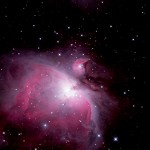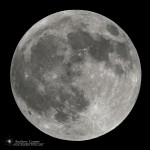A bright trio can be seen tonight as Saturn, the Moon and Spica rise together after sunset. The three will be within 6° of each other. The Moon will be just short of full, over 99% illuminated as it rises. Saturn will be shining at 0.4 magnitude while Spica is very close to 1.0 magnitude.
Author: Andrew
Full Moon
Poli’ahu i ke kapu
Poli’ahu is the goddess of snows who calls Mauna Kea her home. Poli’ahu i ke kapu, recently released by Hāwane, is a tribute to Poli’ahu, the divine snow goddess of Mauna Kea.
True, the sales of the song on iTunes go to KAHEA’s Hawaiian-Environmental Alliance Mauna Kea Legal Defense Fund. This is the same group that opposes telescopes on the mountain. The Enemy? Not really. In this case I respect those who stand up for what they believe, even if I disagree. KAHEA does needed work on other fronts across the islands.
Besides, it is a good song…
Keck Lecture Webcast Link
Here is the stream for tonight’s Keck lecture. Nothing to see if you stop by early (or late). Come by at 7:00pm HST to see Dr. Richard Wainscoat of the University of Hawai’i Institute for Astronomy, “City Dark: Search for Night on a Sleepless Planet.”
Better yet… drop by the Kahilu Theater in Waimea to see the talk in person.
Reminder- Keck Lecture Tomorrow Night
You are invited to attend a free Keck Observatory lecture…

Dr. Richard Wainscoat
University of Hawai’i Institute for Astronomy
Kahilu Theater
Thursday, April 5th, 2012
7:00pm
The advent and spread of electrical lighting has made it ever harder to find the dark skies valued by professional and amateur astronomers, not to mention lovers of starry skies in general. Dr. Wainscoat tells the story about light pollution and astronomy, with special emphasis on light pollution’s effects on the world’s best astronomical observing site: Mauna Kea on the Big Island of Hawai’i. Dr. Wainscoast is an astronomer as well as an accomplished photographer.
There is no charge for admission to any events in the Makana series.
Presented by W.M. Keck Observatory.
Toby
Canon Introduces the 60Da
Most of my astrophotos are taken with my venerable Canon 20Da, a special version of the EOS 20D that was produced for astrophotography. Normal DSLR cameras work quite well for astrophotography, with one major drawback… The filter placed in front of the sensor blocks much of the Hα light emitted by many nebulae.

Specifically for astrophotography, Canon produced a special version of the 20D with a re-designed filter that allowed Hα light to reach the sensor, the Canon 20Da. The camera also featured on-screen focusing, a feature now found on most DLSR cameras, but unusual back in 2005.
The 20Da was discontinued in 2006. Astrophotographers wanting a DSLR camera with a filter that admits Hα light must buy a standard camera and remove the filter, or have it modified by specialist that offers a conversion service.
Postcard from the Reef – Roommates
Just another whitemouth moray. But then, I hadn’t seen anything interesting to photograph for a few minutes as I wandered along the reef face. May as well shoot a few frames. Wait? There is a second eel in the cavity! A dwarf moray?

Recycling Galaxies Caught in the Act
W. M. Keck Observatory press release…
When astronomers add up all the gas and dust contained in ordinary galaxies like our own Milky Way, they stumble on a puzzle: There is not nearly enough matter for stars to be born at the rates that are observed. Part of the solution might be a recycling of matter on gigantic scales – veritable galactic fountains of matter flowing out and then back into galaxies over multi-billion-year timescales.
Now, a team of astronomers led by Kate Rubin of the Max Planck Institute for Astronomy in Germany has used the W. M. Keck Observatory to find evidence of just such fountains in distant spiral galaxies.
In the Milky Way, it’s estimated that every year about one solar mass (an amount of matter equal to that of our Sun) worth of dust and gas is turned into stars. Yet a survey of the available raw materials shows that our galaxy could not keep up this rate of star formation for longer than a couple of billion years. Star ages and comparisons with other spiral galaxies show that one solar mass per year is a typical star formation rate. So the puzzle appears to be universal.
Postcard from the Universe – C/2009 P1 Garradd
Currently passing through Usra Major, comet C/2009 P1 Garradd, is bright enough to appreciate in small telescopes. It is well placed for observation, well up in the sky through much of the night. At about magnitude 6.8 it is also bright enough to make an attractive photographic target.
I am not totally happy with the photo, I could have really used more time on target. Another issue, the exposures I used were a bit too long for this fast moving target, the coma is elongated in the frames. I will probably re-shoot the comet if I get a chance soon.



